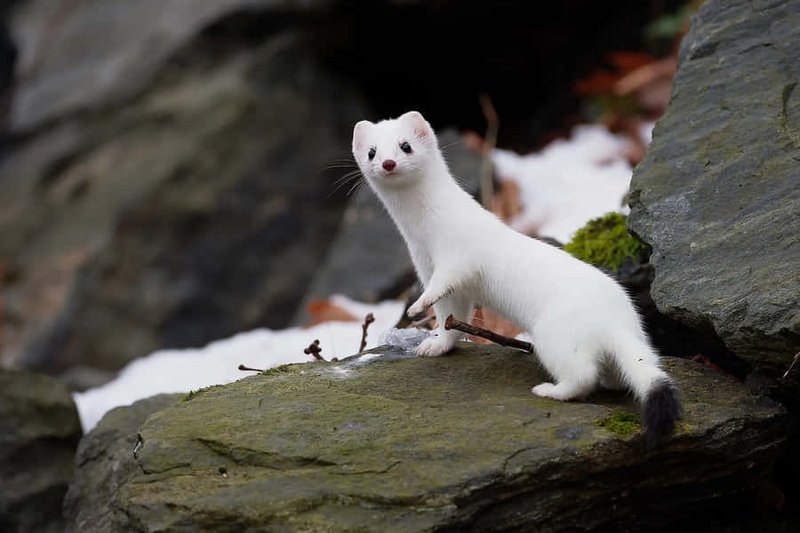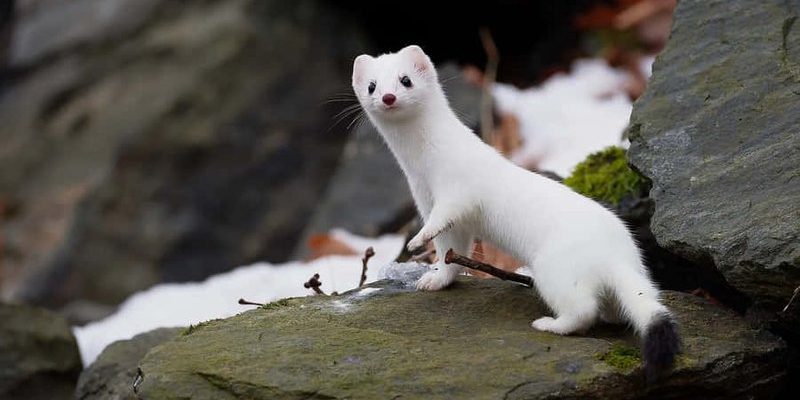
So, let’s dive into the evolutionary journey of the ermine and discover how this little weasel evolved over millions of years. Along the way, we’ll explore how its adaptability has allowed it to thrive in various environments, how it played a role in human culture, and why understanding its history is important for conservation efforts today. Grab your favorite beverage, and let’s chat about this delightful creature!
What Is an Ermine?
Before we get into the nitty-gritty of its evolutionary history, let’s clarify what an ermine actually is. The ermine is a small mammal belonging to the weasel family, Mustelidae. But here’s the kicker: it’s known for its seasonal coat change. In summer, the ermine has a rich brown fur, perfectly blending into its surroundings. However, when winter rolls in, it shifts to a stunning white coat to camouflage against the snow. This clever adaptation is crucial for its survival in colder climates.
Ermines are typically found across North America, Europe, and Asia, favoring forests, grasslands, and tundra regions. They are agile hunters, capable of taking down prey much larger than themselves, like rabbits and birds. Here’s the thing: their evolutionary design isn’t just for looks; it’s a survival strategy. Being able to blend into both summer and winter landscapes helps them evade predators while hunting for food.
The Origins of the Ermine
The ermine’s ancestors date back millions of years. The Mustelidae family, which includes otters, ferrets, and badgers, is believed to have originated around 30 million years ago. The first mustelids were small, weasel-like creatures that roamed the earth. Over time, various species evolved, adapting to their specific habitats and developing distinct traits.
One major turning point in the ermine’s evolution occurred during the Pleistocene epoch, about 2.6 million years ago. During this time, the Earth’s climate fluctuated dramatically, leading to the development of glaciers and cold environments. These changes drastically affected the ecosystems inhabited by small mammals, and those that adapted to survive in colder temperatures began to thrive. The ermine, with its winter coat change, was one of those fortunate survivors.
Interestingly, the ermine is closely related to the stoat, another small mustelid. They share a common ancestor, and their evolutionary paths diverged as they adapted to different environments. While the stoat remains primarily brown year-round, the ermine’s ability to change its coat has become a critical survival tool in harsher climates.
The Role of Climate in the Ermine’s Evolution
Climate has played a significant role in shaping the ermine’s evolutionary history. As mentioned earlier, the Pleistocene epoch introduced significant climate shifts that favored animals capable of adapting to cold environments. The ermine’s distinctive coat change is an example of how species can evolve in response to their surroundings.
The fluctuating temperatures and seasonal changes in the ermine’s habitats have influenced not only its appearance but also its behavior and lifestyle. In summer, when temperatures rise, these animals become more active. They hunt and store fat to prepare for the cold months ahead. When winter arrives, their white coat provides excellent camouflage in snowy conditions, allowing them to sneak up on prey and avoid larger predators.
Interestingly, climate change in modern times poses new challenges for the ermine. As temperatures rise and snow patterns shift, their ability to adapt may be tested. You might wonder how this will impact their future, and that’s a crucial concern for wildlife conservationists.
Human Interaction and Cultural Significance
The ermine has a long history of interaction with humans, and it’s fascinating how these encounters have shaped both the species and our culture. In medieval Europe, ermine fur became a symbol of purity and nobility—think of it as the luxury fabric of its time. Royalty adorned their robes with ermine, and you’d often see it featured in art and heraldry.
You might be wondering about the ethics behind fur use. Historically, hunting and trapping for ermine pelts caused significant population declines in some areas. Thankfully, attitudes toward fur have changed, and many regions now implement conservation efforts to protect the ermine and its habitats. Today, while they may no longer be as prominent in fashion, they are still celebrated in literature and folklore.
This connection between humans and ermines highlights the impact of our actions on wildlife and the importance of preserving natural habitats. Understanding the history of the ermine helps us recognize our role in supporting their populations and the ecosystems they inhabit.
Conservation Efforts for the Ermine
With rising environmental concerns, conservation efforts for the ermine have become increasingly important. As habitats face threats from climate change and habitat loss, many organizations work tirelessly to safeguard these little creatures. Efforts often involve research on their populations, habitats, and behaviors to understand how best to support their survival.
Zoning laws, protected areas, and educational outreach are all ways conservationists help preserve the ermine’s habitat. Creating awareness about its unique characteristics and adaptations encourages respect for this species and promotes preservation initiatives.
Additionally, scientists are studying how these changes will impact the ermine’s future. This research is vital for developing strategies that will ensure their survival as we face an uncertain climate. It’s a reminder that tiny creatures like the ermine play big roles in our ecosystems, and their preservation is crucial.
Future Prospects for the Ermine
Looking ahead, the future of the ermine is uncertain but full of potential. Climate change, habitat destruction, and the human-animal relationship all present challenges for this resilient creature. However, the ermine’s ability to adapt has been proven throughout its evolutionary history, and there’s hope that it will continue to thrive.
As we become more aware of our impact on the environment, collective efforts toward conservation can create a brighter future for the ermine. It’s a call to action for all of us to get involved, whether through supporting wildlife initiatives or spreading awareness about the importance of biodiversity.
In the grand timeline of evolution, the ermine stands as a testament to resilience and adaptability. As we learn more about its story, we become more equipped to ensure that this beautiful animal continues to grace our planet for generations to come.
In conclusion, embracing the full tapestry of the ermine’s evolutionary history teaches us not only about the animal itself but also about our place in the world. Let’s honor this little creature by advocating for its conservation and appreciating the unique role it plays in our ecosystems.

